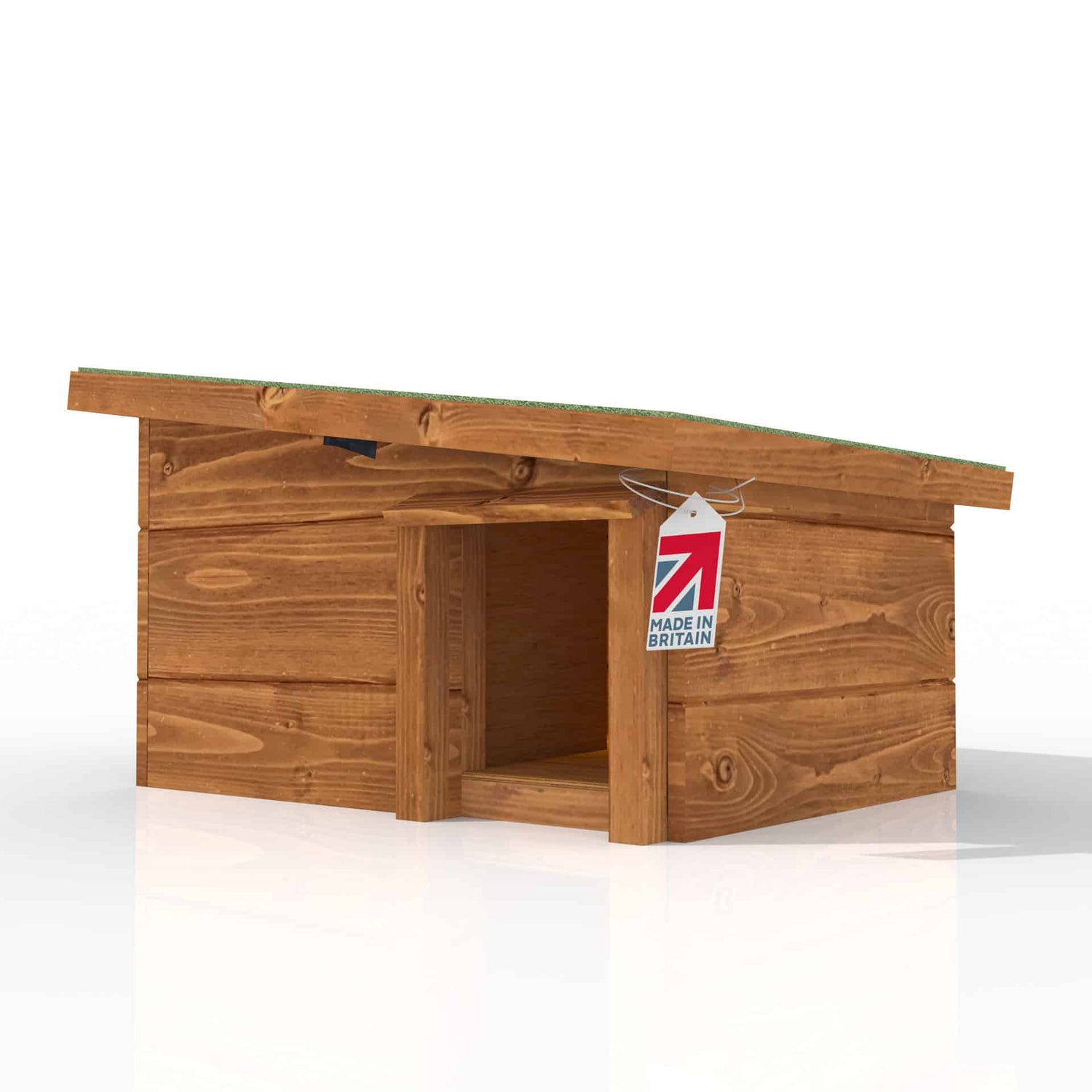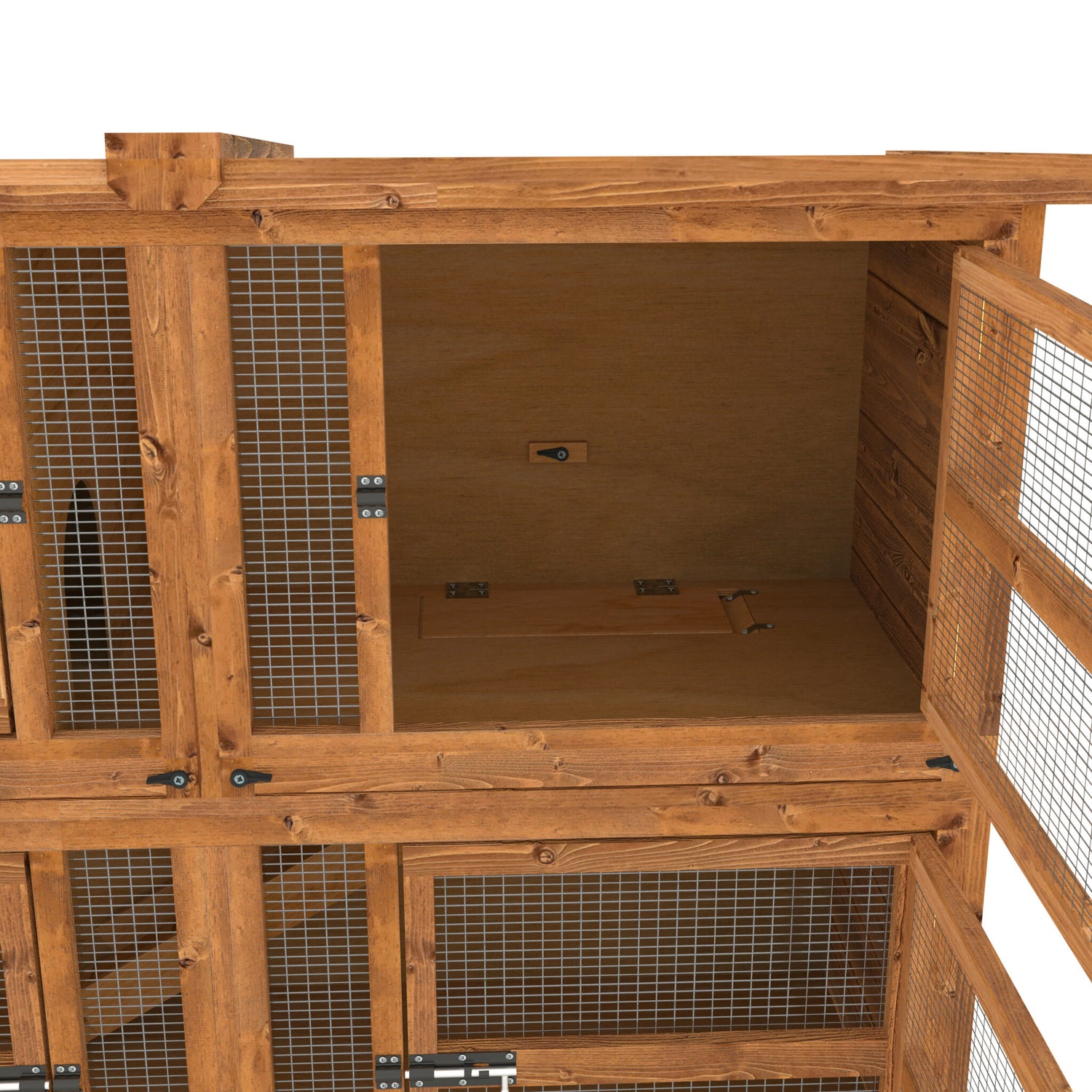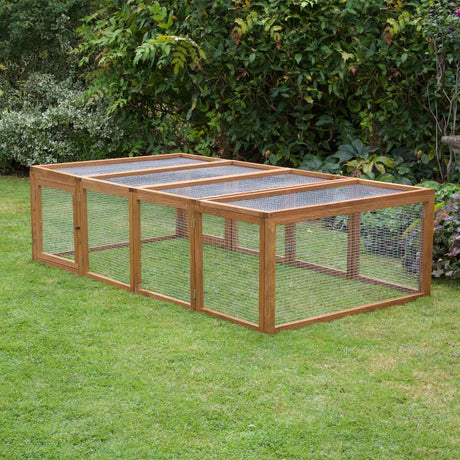Creating a safe place for local wildlife can be fun and rewarding. But should you build it yourself or buy a professionally made one? Let's look at the good and bad points of DIY and professional wildlife housing to help you choose what's best for the animals in your garden. This guide will cover important things like design, materials, and more to help you make a good decision for you and the wildlife.
Key Takeaways
| Aspect | DIY Wildlife Housing | Professional Wildlife Housing |
|---|---|---|
| Cost | Usually cheaper | Costs more at first |
| Customization | Can change a lot | Fewer options to change |
| Expertise Needed | Need to research and learn skills | Made by wildlife experts |
| Time Needed | Takes time to build | Ready to use right away |
| How Long It Lasts | Depends on materials and how well it's made | Often lasts longer |
Understanding Wildlife Housing Needs
Before we talk about DIY vs professional, it's important to know what wildlife needs in a home. Different animals need different things, but generally, wildlife houses should have these important features:
- Protection from predators: This is very important for smaller animals that can be easily hunted.
- Shelter from bad weather: Wildlife houses should protect animals from very hot or cold temperatures, rain, snow, and wind.
- A safe place to rest or hibernate: Many animals need a quiet, secure spot to sleep or hibernate.
- Materials that feel like natural homes: Using materials animals are used to can help them feel more comfortable.
- Good air flow: Fresh air is important to stop mold and keep the house healthy.
- Right size and entrance: The house should be big enough for the animal but have a small entrance to keep bigger predators out.
DIY Wildlife Housing: Pros and Cons
Building your own wildlife house can be fun and teach you a lot. It lets you get closer to nature and learn about what local animals need. Here are some good and not-so-good things about making your own:
Good Things About DIY
- Costs less: Often cheaper than buying ready-made houses, so you can make more or bigger ones.
- Can make it how you want: You can design it to fit your garden and the animals you have.
- Learn new things: Great way to learn about local wildlife and their homes.
- Feel proud: It feels good to make something yourself, especially when animals use it.
- Can change it: You can fix or improve it as you learn more about what the animals need.
- Fun for families: Can be a great project to do with kids, teaching them about animals and how to build things.
Tricky Things About DIY
- Takes time: You need to research and work hard to build it right, which might be hard if you're busy.
- Need skills: How good it is depends on how well you can build things.
- Finding materials: It can be hard to find the right, safe materials, especially if you want eco-friendly ones.
- Might make mistakes: If you build it wrong, it might not work well or could even be unsafe for animals.
- Not an expert: Without professional knowledge, you might forget important things that certain animals need.
- Need tools: You might have to buy tools you don't have, which costs extra money.
If you're good at building and have some free time, making your own wildlife house can be really rewarding. But it's really important to research a lot and follow expert advice to make sure your house is safe and works well for local animals. Maybe ask local wildlife groups or people who have done it before for tips. Remember, different animals need different things, so what's good for one might not work for another. Also, make sure to use materials that are safe for animals and don't have any toxic stuff in them.
Professional Wildlife Housing: Good Things and Things to Think About
Wildlife houses made by professionals have some good points, especially if you want something that works well without having to build it yourself. These are made by experts who know exactly what different animals need and have tested their designs to make sure they work.
Good Things About Professional Housing
- Expert design: Made with special features for specific animals that you might not think of yourself.
- Good materials: Often made with strong, safe materials that last a long time outside.
- Saves time: Ready to use right away, so animals can move in quickly.
- Know it works: Tested and proven to work for the animals it's made for.
- Follows rules: Often designed to meet wildlife protection guidelines.
- Always good quality: Each one is made the same way, so you know what you're getting.
Things to Think About with Professional Housing
- Costs more: Usually more expensive than making your own, so you might not be able to get as many.
- Not customizable: Might not fit perfectly in your garden or for your specific local animals.
- Not personal: You don't get the feeling of making it yourself or being able to change it.
- Might rely on it too much: Could make you less involved in learning about wildlife needs.
Professional wildlife housing is great if you want something that's ready to go and works well. It's especially good if you don't have time, tools, or aren't sure about building your own. Let's look at some examples from Home & Roost's hedgehog collection, which show what professionally designed wildlife houses are like:
Predator Proof Hedgehog House
This handmade shelter is a safe place for hedgehogs to sleep or eat. It has:
- Made from special wood in Kent, which is good for the environment
- Coated with a safe treatment to make it last longer and resist weather
- Fixed base so it doesn't tip over or let predators in easily
- Roof you can take off to clean and check on the hedgehogs
- Special entrance that keeps big animals out but lets hedgehogs in
- Small size (40cm x 30cm x 25cm) that fits in most gardens
Chartwell Single Luxury Rabbit Hutch
This hutch has good air flow and keeps rabbits of all ages safe. It has:
- Spacious living area for ultimate comfort
- Easy assembly with included guide and hardware
- Fixed base and air tube to keep air moving and stop dampness
- Eco-Friendly, pet-Safe water-based treatment
- Unrivaled durability from british manufacturing
Things to Think About When Choosing
When deciding between DIY and professional wildlife housing, think about these things carefully to make the best choice for you and the local wildlife:
Time and Skill Level
Think about how much time you have and your DIY skills
Budget Constraints
Look at how much money you can spend on the project
Durability Requirements
Think about how long-lasting the materials and build need to be
Specific Wildlife Needs
Consider the unique needs of the animals you want to help
Your choice should depend on how much time you have, how good you are at DIY, how much money you can spend, and what the wildlife in your area needs. For example, if you want to help hedgehogs, a professionally made house might be best because hedgehogs need very specific things to be safe and warm. Also think about:
- Local weather: If it's very hot, cold, or rainy where you live, you might need a stronger, professionally-made house.
- Predators: If there are lots of animals that might hurt the wildlife you want to help, you might need a special predator-proof house.
- Long-term care: Think about whether you can keep looking after a DIY house over many years.
- How it looks in your garden: Professional houses might look better in some gardens.
- Different animals: If you want to help lots of different animals, professional houses often have special designs for each type.
Materials for Wildlife Housing
Whether you're building your own or buying a professional house, the materials used are really important for keeping wildlife safe and comfortable. The right materials can make the house last longer and be more appealing to animals.
Common Materials for DIY Projects
- Untreated wood (like cedar, pine, or oak): These naturally resist rotting.
- Natural stuffing (like straw or dried grass): These keep animals warm and feel like their natural nests.
- Safe waterproof coatings: These protect the wood from rain without hurting animals.
- Wire mesh for air holes (not chicken wire): This lets air in but keeps predators out.
- Recycled materials: Old wooden pallets or used lumber can be good for the environment.
- Natural stone or brick: For making strong bases or walls around entrances.
- Coconut fiber: This is great for lining nests or keeping them warm.
Materials Used in Professional Wildlife Housing
Professional wildlife houses often use high-quality, sustainable materials. For example, Home & Roost uses special certified wood in their products to make sure they last and are good for the environment. Other common materials in professional housing include:
- Treated, wildlife-safe wood: Specially treated to last outside without hurting animals.
- High-grade plastics: Used in some designs because they last long and are easy to clean.
- Special insulation: Often put in walls and roofs to keep the temperature just right.
- Weatherproof paints and coatings: Used to make the house last longer without being dangerous for animals.
- Galvanized metal parts: Used for hinges and latches to stop them from rusting.
These rabbit hutches show how good the materials and build are in professional wildlife housing. They use thick wood panels and strong wire mesh to keep rabbits safe and comfortable. The 5ft Chartwell Double Rabbit Hutch has two floors with a safe sleeping area and a bigger space for exercise. The 6ft version is even bigger, good for more rabbits or those that need extra room. Both hutches have special features like waterproof roofs, secure locks, and raised floors to keep them dry and warm.
Conclusion: Making the Right Choice
Choosing between DIY and professional wildlife housing depends on many things like your time, skills, money, and what the local wildlife needs. Both ways have good points, and the best choice often depends on your situation and what you want to achieve. Here's a quick summary to help you decide:
- DIY is great if you have time, skills, and want to make something personal. You can make it exactly how you want and learn a lot.
- Professional housing is reliable, designed by experts, and saves time. It's perfect if you want something that's guaranteed to work well.
- Think about what the wildlife in your area needs when making your choice. Some animals might do better with professionally designed houses.
- Remember, the main goal is to give wildlife safe, comfortable homes. Whichever you choose, make sure it meets the basic needs of the animals you want to help.
- Don't be afraid to mix DIY and professional solutions if that works best for you. A mix can create a varied and effective wildlife habitat.
Whether you build your own or buy a professional solution like those from Home & Roost, the most important thing is that you're helping local wildlife. Your efforts, big or small, help protect animals and create a more diverse ecosystem in your garden. By providing good homes, you're playing an important part in protecting and supporting local wildlife.
Remember, making spaces for wildlife isn't just about houses. Think about adding feeding stations, water sources, and native plants to make your garden even better for wildlife. These extra things can work with your wildlife houses to create a full ecosystem that supports many different animals. Have fun with your wildlife housing project, and enjoy watching and helping nature right in your own backyard!













